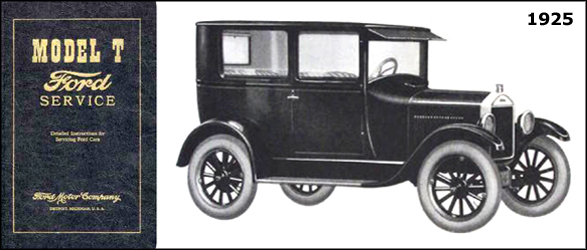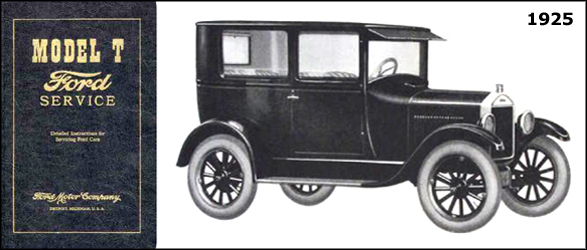In 1925, an acknowledgement was made that although several automobile manufacturers had been building motorcars since 1900, it was the inimitable Henry Ford who produced a vehicle that exceeded the realm of manufacture to become an institution.
The new Ford that year appeared to live up to its expectations and more. The announcement that the new 1925 Ford was about to roll off the assembly line greatly aroused public interest. When the car was finally unveiled, hundreds of thousands of people all over the country crowded into Ford showrooms within a span of days to inspect the new product. In large cities as well as small ones, the machine was equally well received, the new model dominating popular conversation.

Johnson City’s dealer was Universal Motor Corporation, located in the southeast corner of the intersection of King and Boone streets. They sold the Ford, Lincoln and Fordson (tractor) vehicles. The city displayed the same excitement being generated across the country. The dealership was immensely packed throughout business hours. According to one comment: “Barring any discussion of merits or relative values of the various small cars now on the markets and with the thought of fairness to all, it is probable that never has a new model of any make at any price and at any time attracted as much attention.” That was quite a statement.
The automobile was distinctly improved over previous years. It possessed modern stylish lines, crowned fenders, beveled topsides, a one-man type top, larger and more comfortable seats, balloon tires, a rear mounted spare tire housed in a sturdy carrier, a license plate holder, rear lights of improved design and durability and side curtains that swung with the doors.
Also, the coils were removed from their time-honored position on the dash and installed alongside the motor block in a waterproof metal case. The steering wheel was larger and positioned at a more comfortable and casual location. The seat cushions were tilted for comfort and the upholstery was pleated in accordance with accepted standards. Doors were wider than in previous models. The gasoline tank was built into the dash, allowing the filler to be accessible through an opening with a lid that on the average car acts as a cowl (chimney) ventilator.
Passengers did not have to be bothered in order to take on fuel. The windshield was of the ventilating type, comparable with shields on more expensive open cars. The body was four inches lower, permitting more legroom in both front and rear tonneaus.
Amazingly even with all the improvements, there was no increase in price from the previous year. Color options were limited with most touring cars appearing in standard black, but the public was informed that other colors would soon be made available. Buyers didn’t care about their car’s paint; they wanted a Ford.
Gas supplies were plentiful in 1925, but the oil companies made an interesting prophetic observation that could have been made in today’s environment: “Although the production of gasoline increased 600% in the last ten years, from 1.5 billion gallons in 1914 to nine billion gallons in 1924, it is believed the reduction of gasoline consumption by improvement in automotive engines or the development of substitute fuels or other sources of energy is expected to proceed faster than the exhaustion of our crude petroleum resources.”
Ford Motor Company was definitely in a class of its own in 1925, but that admiration would eventually change as competition from national and international car manufacturers leveled the playing field.

Comments are closed.